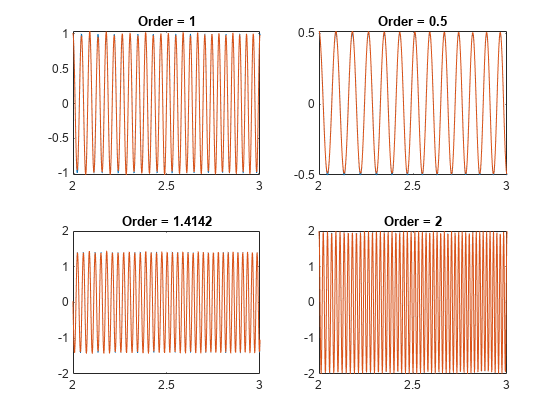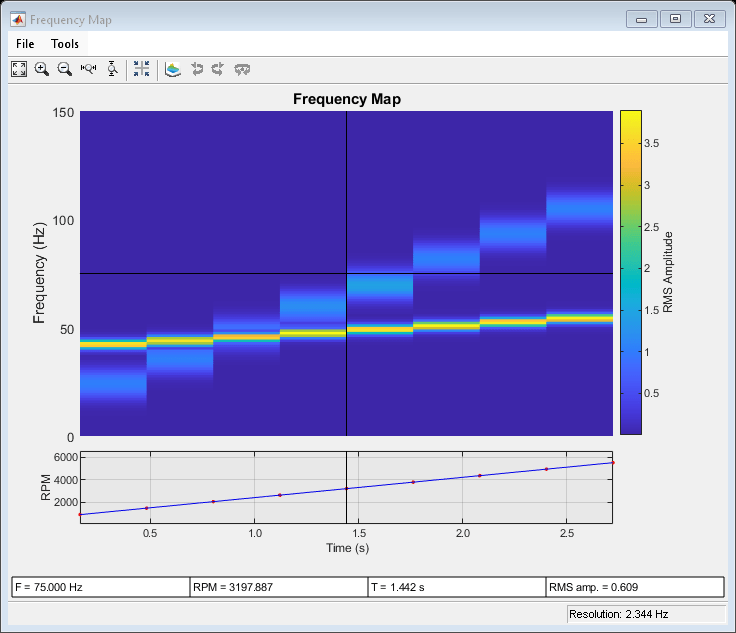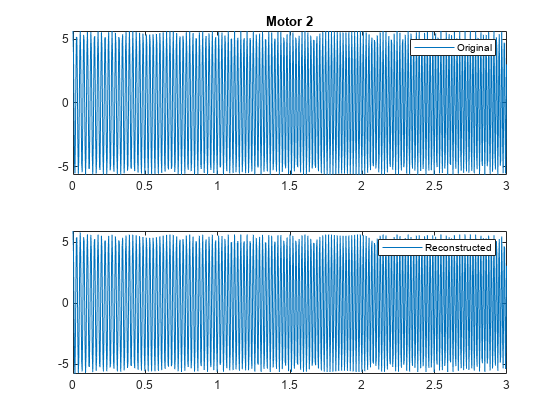orderwaveform
Extract time-domain order waveforms from vibration signal
Syntax
Description
xrec = orderwaveform(x,fs,rpm,orderList)x. x is
measured at a set rpm of rotational speeds expressed
in revolutions per minute. fs is the measurement
sample rate in Hz. The vector orderList specifies
the desired orders, whose waveforms are returned in the corresponding
columns of xrec. The function uses the Vold-Kalman
filter for the computation.
Examples
Input Arguments
Name-Value Arguments
Output Arguments
References
[1] Feldbauer, Christian, and Robert Höldrich. "Realization of a Vold-Kalman Tracking Filter — A Least Squares Problem." Proceedings of the COST G-6 Conference on Digital Audio Effects (DAFX-00). Verona, Italy, December 7–9, 2000.
[2] Vold, Håvard, and Jan Leuridan. "High Resolution Order Tracking at Extreme Slew Rates Using Kalman Tracking Filters." Shock and Vibration. Vol. 2, 1995, pp. 507–515.
Extended Capabilities
Version History
Introduced in R2016b
See Also
orderspectrum | ordertrack | rpmfreqmap | rpmordermap | tachorpm


